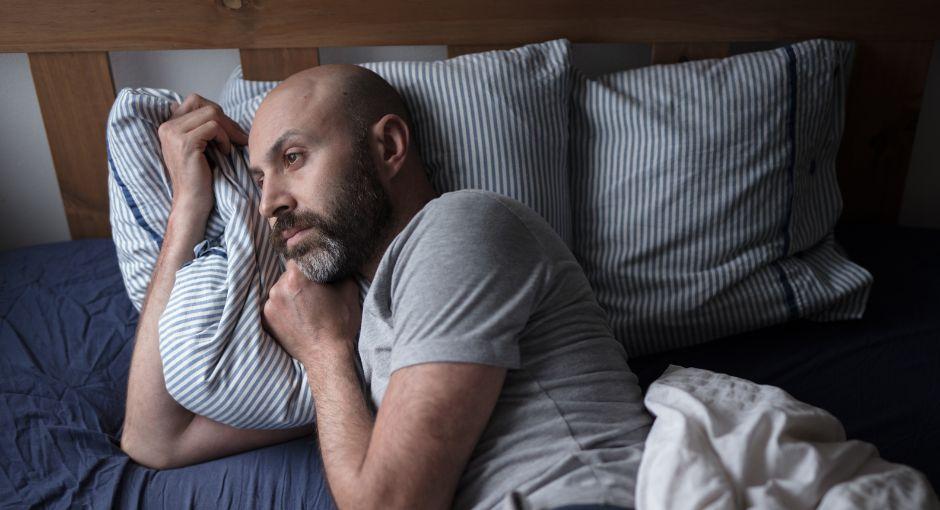How to Address Sleep Disorders in Parkinson’s for Sounder Slumber

Good sleep is not just important for brain function – it is essential for whole-body well-being. Sleep fuels heart and gut health, immune function and more. Sleep disturbances can be common in Parkinson’s disease (PD), but getting a good night’s sleep is possible. Discover how to identify and manage symptoms of insomnia, restless leg syndrome (RLS) and REM sleep behavior disorder (RBD).
The following article is based on a Parkinson’s Foundation Expert Briefing about managing sleep disturbances, hosted by Roneil G. Malkani, MD, associate professor, Northwestern University Feinberg School of Medicine, and neurologist, Northwestern Memorial Hospital, a Parkinson’s Foundation Center of Excellence.
While people are meant to spend about a third of their day sleeping, Parkinson’s-related brain changes and disease symptoms can disrupt the body’s internal clock.
These challenges, coupled with excess daytime sleepiness, can create a vicious cycle. Too much sleep during the day and fragmented sleep at night can cause fatigue and impact movement, function, mood and well-being.
Tackling Insomnia
Like good health, restful slumber takes work, often requiring daily exercise and time outside in natural daylight. Limiting naps, winding down before bed, minimizing screentime, sticking to a bedtime schedule and keeping a dark, cool bedroom are also key to deep sleep. Sometimes, just stepping out of bed when feeling restless to pursue a quiet activity until feeling tired can make all the difference.
However, even when following best practices for sleep, insomnia can persist in Parkinson’s:
-
As levodopa wears off, tremor or other movement symptoms can increase, making turning over in bed difficult.
-
Age-related aches or arthritis can also flare up at night.
-
Nocturia, the need to frequently urinate throughout the night, can affect as many as 60% of people with PD. An enlarged prostate can also increase urinary urgency for men.
-
Depression and anxiety, common and often undertreated in people with PD, can exacerbate sleeplessness. So can stress. Conversely, insomnia can cause mood changes and stress.
-
Sleep apnea, disrupted breathing during sleep, can impact nearly half of people with PD.
If tossing and turning continue despite a healthy sleeping environment, talk to your doctor, who can review and adjust the dosage and timing of current medications and get to the root of sleep problems. Tools used to diagnose sleep disorders often include your medical history, a sleep journal or a sleep study.
Insomnia treatment should be personalized to your individual needs and symptoms, and might include:
-
Cognitive behavioral therapy (CBT), strategies learned in person or online designed to tackle behaviors and thinking that interfere with good sleep.
-
Learned relaxation techniques, such as progressive muscle relaxation, silent repetition of certain calming words or phrases (autogenic training) or use of positive mental visualization (guided imagery).
-
Sleep restriction, which initially limits time in bed with the aim of promoting longer, deeper sleep.
-
Bright light therapy to lessen daytime sleepiness.
Your doctor might combine sleep therapy with medication. Common insomnia medications include:
-
Melatonin
-
Sleep-promoting z-hypnotics (zolpidem, eszopiclone and zaleplon) and benzodiazepines (clonazepam and temazepam)
-
Wakefulness-inhibiting therapies including trazadone, tricyclic antidepressants (amitriptyline and doxepin), mirtazapine, orexin antagonists (suvorexant, lemborexant and daridorexant), melatonergics (melatonin and ramelteon) and quetiapine
Other PD-related insomnia therapies can include safinamide, doxepin and eszopiclone.
Restless Leg Syndrome (RLS)
People who experience Willis-Ekbom disease, commonly known as restless leg syndrome, can feel an uncomfortable urge to move, as well as tingling, burning, aching or crawling sensations in the legs. While there isn’t always a known cause, RLS can be linked to neurological changes, medications, including some antidepressants, or iron deficiency. When RLS is suspected, based on a person’s symptoms, evaluating iron levels is necessary.
Treatments for iron deficiency include oral or intravenous iron. If iron levels are sufficient and symptoms continue, there are other treatment options available, including:
-
Alpha-2-delta ligands – gabapentin, pregabalin and gabapentin enacarbil.
-
Benzodiazepines, including clonazepam.
-
Medications such as dipyridamole or amantadine or in severe cases, opioids.
Tonic motor activation (TOMAC) is a new, below-the-knee nerve stimulation treatment approved by the U.S. Food and Drug Administration for moderate to severe RLS that can be used periodically throughout the day.
Though there is a strong relationship between Parkinson’s and RLS, researchers are discovering that the underlying causes of each disease may be very different. Parkinson's is connected to midbrain dopamine loss, while RLS seems to be linked to signaling changes in other areas of the brain.
Dopamine medications commonly used for PD were also once a mainstay RLS treatment. Evidence now shows long-term use of dopamine medications in people with RLS can sometimes cause brain signaling and RLS symptoms to worsen. In someone with Parkinson’s, careful tailoring of dopamine medications used to manage movement symptoms can also be effective in managing RLS symptoms.
REM Sleep Behavior Disorder (RBD)
During the rapid eye movement (REM) stage of sleep, when dreaming happens, typically only the eyes move. The brain shuts down large-body movement as a protective measure. Neurodegenerative diseases, including Parkinson’s, are linked to REM sleep behavior disorder (RBD) failure of this on-off switch. Sleep apnea and antidepressant use can also be linked to RBD.
RBD can cause someone to physically act out their dreams. A person might talk in their sleep, use harsh language or scream, or fall or jump out of bed. These vivid dreams can be mild or incredibly disruptive and may cause injury to the dreamer or their bed partner.
Nearly 50% of people with Parkinson’s report REM sleep behavior disorder symptoms, which can precede a Parkinson’s diagnosis by several years.
Creating a safe sleeping environment is essential for someone experiencing RBD symptoms:
-
Remove any objects that present a risk for injury.
-
If possible, lower the mattress to reduce fall risk.
-
Place protective cushioning on the corners of bedside furniture.
-
Add cushioning to the headboard, a bedrail to prevent falls and a mat or carpet beside the bed to cushion accidental falls.
Bed partners may get deeper sleep using a pillow barrier or separate bed.
A sleep study can diagnose or rule out RBD and medications are often used to manage symptoms. Treatments may include:
-
Melatonin (3 to 12 milligrams)
-
Clonazepam (.25 to 2 milligrams at bedtime) or pramipexole
-
Transdermal rivastigmine
Learn More
Explore our resources about sleep in Parkinson’s:
-
Download our book Sleep: A Mind Guide to Parkinson's Disease
-
Sleep Problems in Parkinson’s fact sheet
-
Read 7 Tips for Better Sleep article
Related Blog Posts

Parkinson's Medications 101

Meet a Researcher Exploring Parkinson’s-related Sleep Disruption
